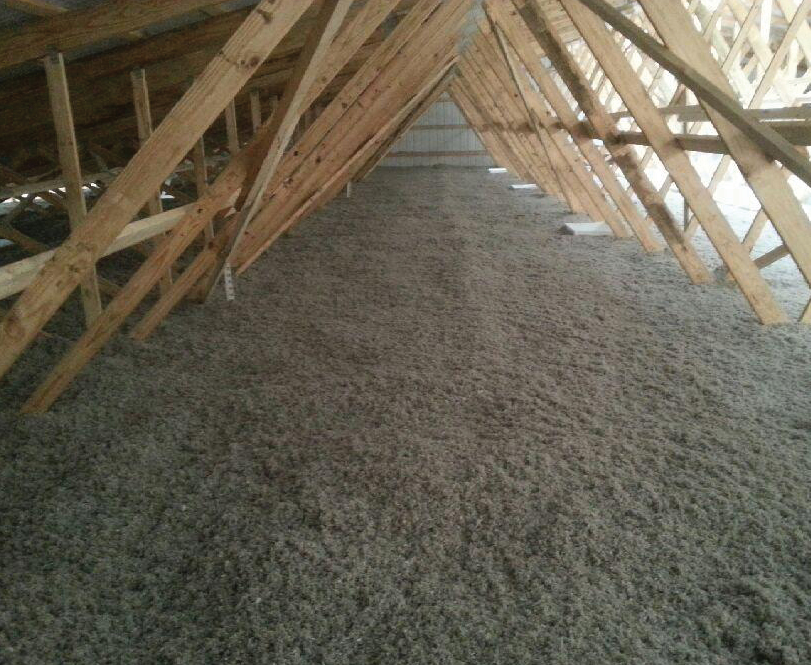Unvented Roof Insulation
An unvented roof assembly is a type of roofing system where the insulation is placed directly against the roof deck, without an intervening ventilation space. This design eliminates the need for vents and eliminates the potential for air leakage through the roof deck. The insulation helps to reduce heat transfer from the building interior to the outside, thereby improving energy efficiency. The lack of ventilation also reduces the risk of moisture buildup, which can help prevent mold growth and extend the lifespan of the roofing system.
Spray foam is a popular choice for unvented roof assemblies because it provides both insulation and air sealing in one application, helping to create a continuous and impermeable barrier against heat transfer and air leaks.
The benefits of unvented roof assemblies have been widely studied and documented in the academic literature. For example, research has shown that unvented roof assemblies can improve the thermal performance of buildings, reduce energy consumption for heating and cooling, and extend the lifespan of the roofing system compared to traditional ventilated roof assemblies.
It’s important to note that while unvented roof assemblies offer many advantages, they also come with some potential challenges, such as the risk of moisture buildup and the need for proper ventilation in other parts of the building to prevent indoor air quality issues. As with any building design, it’s important to consider the specific needs and constraints of each project when deciding whether an unvented roof assembly is the right choice.

Cellulose Insulation & Poly Plastic
In roof assemblies, cellulose blow-in insulation and poly vapour barriers are widely used for insulation and moisture control. Both of these solutions have advantages such as cost-effectiveness, easy installation, and ability to reduce energy costs. However, they are not always the best option. For instance, cellulose blow-in insulation may settle over time and lose its insulating properties, while poly vapour barriers may be prone to tearing or puncturing and lack durability. Alternatives such as spray foam insulation may provide greater energy efficiency and longer-lasting performance, making them a better choice for certain roofing projects. The choice of insulation and moisture control for a roof assembly ultimately depends on factors such as project requirements, budget, and desired performance.

Hybrid Insulation Systems
Hybrid insulation systems that utilize spray foam insulation offer the perfect balance between performance and cost savings. By combining insulation and moisture control into one application, spray foam improves the efficiency of roof assemblies and eliminates the need for a separate vapor barrier. This results in greater energy efficiency, as well as a reduction in heat loss and air infiltration. The use of spray foam also increases the durability and strength of the ceiling, reducing the risk of tears and punctures. At the same time, these systems are cost-effective, offering a solution that provides improved performance without excessive cost. The balance achieved between improved performance and cost savings makes hybrid insulation systems using spray foam the ideal choice for roof assemblies that demand high-quality insulation and moisture control.


